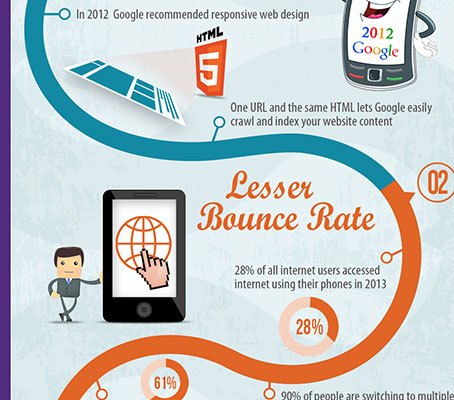Keen To Discover How Site Design Has Transformed Gradually? Dive Into The Evolution From Simpleness To User-Focused Experiences
Keen To Discover How Site Design Has Transformed Gradually? Dive Into The Evolution From Simpleness To User-Focused Experiences
Blog Article
Posted By-Rasmussen Hyldgaard
In the past, web sites were basic and concentrated on info. Navigating was straight, and design was for desktop computers. Currently, customer experience is crucial. https://original.newsbreak.com/@suraj-kr-prakash-1591345/2611565215999-the-guide-to-digital-marketing-strategies overviews designs for easy navigation. Receptive designs suit various gadgets. Today, dark mode minimizes stress, and minimalist menus boost navigation. Interactive functions involve users, and bold visuals stand out. AI combination increases engagement. See just how design has evolved to enhance your online journey.
Very Early Days of Web Design
In the early days of website design, simpleness preponderated. Websites were basic, with restricted shades, font styles, and designs. The emphasis was on offering information as opposed to fancy visuals. Individuals accessed the net through sluggish dial-up links, so rate and capability were vital.
Navigating food selections were straightforward, commonly situated at the top or side of the page. Internet sites were made for desktop computers, as mobile browsing wasn't yet common. Content was king, and designers prioritized very easy readability over complicated design elements.
HTML was the primary coding language utilized, and designers had to work within its restrictions. Computer animations and interactive functions were marginal contrasted to today's requirements. Sites were static, with little dynamic web content or customized user experiences.
Increase of User-Focused Style
With the evolution of site style, a shift towards user-focused style concepts has actually become increasingly noticeable. Today, producing web sites that prioritize user experience is important for engaging visitors and accomplishing business goals. User-focused layout involves recognizing the demands, choices, and actions of your target market to customize the internet site's format, material, and includes accordingly.
Designers now carry out thorough research, such as customer studies and usability screening, to collect understandings and feedback directly from customers. This data-driven technique assists in producing user-friendly navigation, clear calls-to-action, and aesthetically attractive interfaces that resonate with site visitors. By putting https://www.google.com/maps/place/Moon+and+Owl+Marketing/@32.9757271,-106.5344695,1840583m/data=!3m1!1e3!4m6!3m5!1s0x864ddeaa4179705b:0x488d41d2cc6b9750!8m2!3d32.9757271!4d-97.5696258!16s%2Fg%2F11b6mpccrg?entry=ttu&g_ep=EgoyMDI1MDIxMS4wIKXMDSoJLDEwMjExNDUzSAFQAw%3D%3D at the facility of the layout procedure, web sites can supply a much more individualized and pleasurable experience.
Receptive layout has likewise emerged as a vital facet of user-focused design, making certain that websites are optimized for numerous gadgets and screen dimensions. This adaptability boosts availability and usability, dealing with the diverse means users interact with websites today. Fundamentally, the increase of user-focused design indicates a shift in the direction of creating electronic experiences that prioritize the needs and expectations of completion customer.
Modern Trends in Website Design
Explore the current patterns forming website design today. One famous fad is dark mode style, using a sleek and modern appearance while minimizing eye pressure in low-light settings. One more essential fad is minimal navigation, simplifying food selections and boosting user experience by focusing on essential elements. Integrating micro-interactions, such as animated buttons or scrolling impacts, can produce a much more interesting and interactive site. Responsive design stays crucial, guaranteeing seamless user experiences throughout numerous devices. Furthermore, utilizing bold typography and asymmetrical formats can add aesthetic rate of interest and draw attention to certain web content.
Incorporating AI technology, like chatbots for customer support or personalized referrals, improves user interaction and streamlines processes. Ease of access has also come to be a considerable trend, with developers prioritizing inclusive design techniques to cater to varied individual needs. Accepting sustainability by maximizing website performance for speed and effectiveness is an additional emerging pattern in web design. Teaming up with customer comments and information analytics to iterate and enhance style constantly is important for staying pertinent in the ever-evolving electronic landscape. By embracing these modern patterns, you can produce an aesthetically attractive, user-friendly internet site that reverberates with your audience.
Conclusion
As you assess the advancement of internet site layout from the early days to currently, you can see exactly how user-focused design has actually ended up being the driving force behind modern-day fads.
Accept the journey of adjustment and adaptation in web design, always keeping the individual experience at the forefront.
Remain present with the current trends and innovations, and never ever quit evolving your strategy to create visually spectacular and straightforward websites.
Advance, adapt, and develop - the future of website design remains in your hands.
